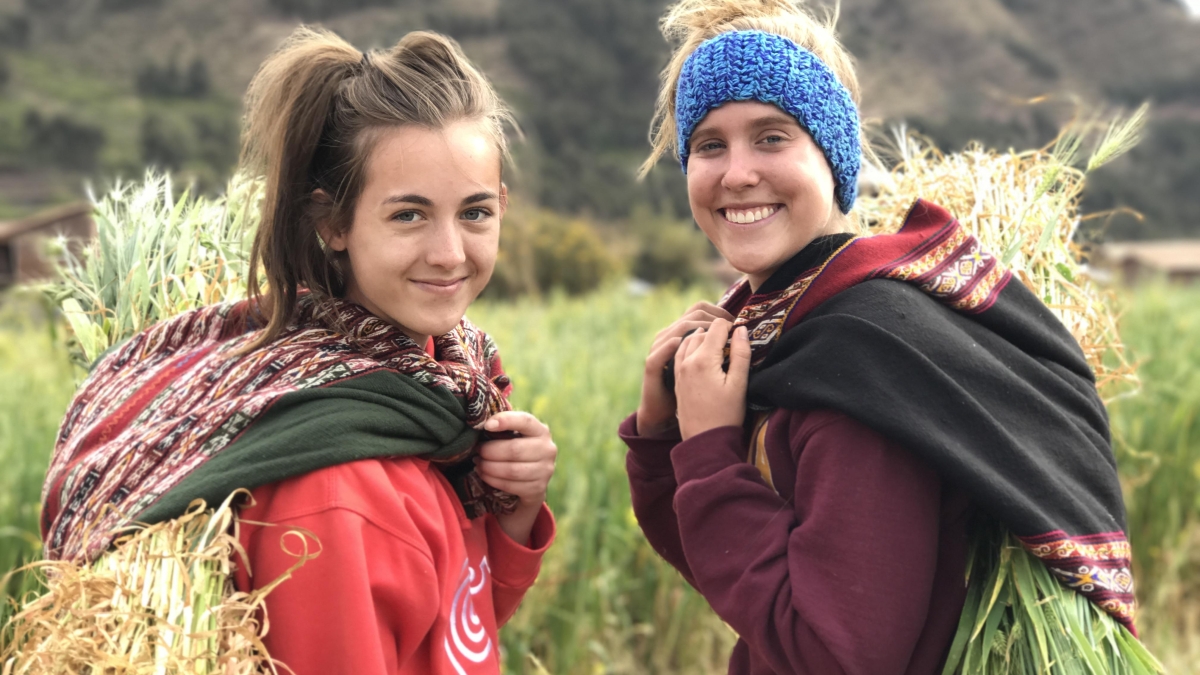Money, money, money: How students can fund their study abroad experiences

ASU students on their faculty-directed study abroad program to Peru. Photo by Jessica Cassano
Even though it may sound as if studying abroad has no downsides, many students consider their options and, ultimately, count themselves out of studying abroad for one reason alone: the cost.
“I mean, I want to travel, but it’s way too pricey for me to even think about doing right now. Maybe someday once I’ve graduated and have a real job …”
Kevin McCawley, a biochemistry and pre-med graduate with a Spanish minor, can still remember repeating this to himself during his first year at Arizona State University. However, after a full (debt-free) semester in Santiago, Chile, he is now a student in medical school and realized his thinking was actually the opposite of reality.
Time and time again, students share their stories of how funding should not be the straw that breaks the camel’s back, and that studying abroad is more than worth it in the end. There are plenty of funding options to make a study abroad opportunity a reality.
The ASU Study Abroad Office is committed to helping students find the best opportunities possible for financing their study abroad. With a scholarship search targeted for just study abroad scholarships, a financial aid and program cost sheet for each program and a handbook tailored to helping students navigate their way through funding their study abroad, every student has the chance to find a study abroad program that fits well within their budget.
The Study Abroad Office even funds its own scholarships for Sun Devils, giving out thousands of dollars in scholarships:
Study Abroad Office Travel Grant: Grants based on financial need and academic merit.
Study Abroad Office Diversity Scholarship: From minority students to STEM majors, student athletes to ASU Online Sun Devils.
Study Abroad Office Planning Scholarship: Targeted at first-year, first-generation students to use whenever they choose to study abroad during their undergraduate studies.
Study Abroad Local-to-Global Scholarship: Scholarships of up to $6,000 for Arizona residents to help them get abroad.
Plus, scholarships received through the Study Abroad Office will combine with the financial aid and scholarships a student is already receiving through ASU if they are traveling during an academic session. Students can always use a cost chart to compare what they would be paying abroad to what they are already paying on campus. (Hint: It’s possible that it could be the same or less!)
In addition, there are an abundance of national scholarships, including the Benjamin A. Gilman scholarship for Pell Grant recipients, set in place to send American students exploring borders far beyond their own.
Of course, the total cost to an experience abroad depends on the program and the spending habits of the student. However, the total cost can be estimated through the program cost sheet found on each program brochure. The program cost sheet breaks down all of the fees charged by the Study Abroad Office as well as nonbillable items like airfare and food. To cut down on costs, students can choose to buy groceries at a local market instead of eating out at pricey restaurants each day. Or they could consider taking public transportation versus paying for taxis. By penny pinching, students might even get to experience more of what life is really like for the locals of the area in which they are staying.
Only a $50 nonrefundable application fee is required to get started on the opportunity of a lifetime. From the beginning of the application process to the moment they step off the plane back in the U.S., students have the unwavering support of the Study Abroad Office.
Looking for even more advice on how to afford studying abroad? The Study Abroad Office hosts Financing Your Study Abroad workshops during both the fall and spring semesters to help students navigate the often-confusing world of scholarships, financial aid, crowdfunding and budgeting. Reach out to the Study Abroad Office with any questions.
More Arts, humanities and education

Upcoming exhibition brings experimental art and more to the West Valley campus
Ask Tra Bouscaren how he got into art and his answer is simple.“Art saved my life when I was 19,” he says. “I was in a…

ASU professor, alum named Yamaha '40 Under 40' outstanding music educators
A music career conference that connects college students with such industry leaders as Timbaland. A K–12 program that…

ASU's Poitier Film School to host master classes, screening series with visionary filmmakers
Rodrigo Reyes, the acclaimed Mexican American filmmaker and Guggenheim Fellow whose 2022 documentary “Sansón and Me” won the Best…

